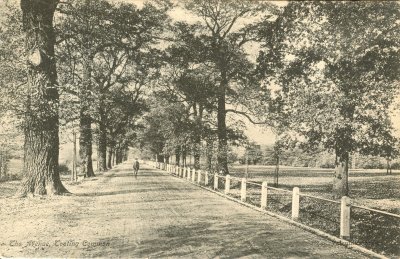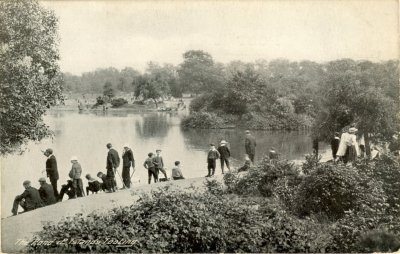Here you can find out about the geography of the Common, transport links, and its history. We also have a gallery of photos taken at various times throughout the years.
One of our members, Roy Vickery, a botanical expert, keeps a log of all plants found on the Common:
List of environmental/ecological dates
FOTC have developed this list of days during the year relating to environmental, ecological or natural history matters which are relevant to the Common, with links to relevant websites.
We will also have these dates in mind for when we plan FOTC activities. We also plan to maintain and develop the list further.
Ecological impact on wildlife of current use of greenspaces
During summer 2020, with considerably increased use of the Common, Valerie Selby (Parks Development and Biodiversity Manager at Enable) wrote this very interesting article on the ecological impacts on wildlife of the current increased use of greenspaces in Wandsworth, including Tooting Common.
Among other things, Valerie referred (in the final paragraph) to the annual “30 days Wild” challenge from the Wildlife Trusts in June: https://www.wildlondon.org.uk/news/30-days-wild. You may like to consider participating in this.
History of Tooting Common
Historically there are two commons: Tooting Bec Common, in the parish of Streatham, and Tooting Graveney Common, in the parish of Tooting Graveney. Tooting Bec Common was at one time also known as Tooting Heath. The boundary between them followed a watercourse known as the York Ditch, a tributary of the Falcon Brook, which ran where Doctor Johnson Avenue now stands.

Until the late nineteenth century the neighbouring areas were predominantly rural, and the Commons were mainly agricultural rather than recreational, as today. They tended to be made up of poorer agricultural land left over after the better land had been taken up by local farms and, as their name suggests, they were a common resource for the people of the parish, who could use them for various purposes: putting their animals out to graze, collecting wild fruits and wood, digging up gravel. The hollows on the Common, such as the one in which the running track sits, are not natural features but were made through long periods of gravel extraction.
In those days, local government was conducted through the parish vestries, and this began to change in the late nineteenth century, as the Commons and surrounding areas were also changing. Some of the vestries’ responsibilities were transferred to the newly-formed Metropolitan Board of Works, who acquired Tooting Bec Common in 1873 and Tooting Graveney Common in 1875. Subsequently the Commons were transferred to the London County Council (later the Greater London Council), and from the GLC to Wandsworth Borough Council in 1971.
From the 1870s onwards, as the area was absorbed by the growing London metropolis, the agricultural uses gave way to recreation and an oasis for nature in a suburban setting. In 1884 Mr Chichester, tenant of Hyde Farm in Balham, was allowed to continue turning sheep onto the common, but agreed not to put out “horned cattle, horses or any other animal”.
By that time, Tooting Bec Common had already been changed by the coming of the railways. The line between Balham and Streatham Hill was opened in 1855 by the West End and Crystal Palace Railway, while the London, Brighton & South Coast Railway opened their main line route through the Common in 1860.
The LCC established tennis courts, a putting green, a pond for sailing model boats, the tearoom and changing rooms for football teams. For a short while golf was permitted, but restricted to the very early morning for reasons of safety.

The Lido opened in 1906. The prime mover behind the enterprise was the Revd John Hendry Anderson, Rector of Tooting, who was keen to provide work for local unemployed men. The project was undertaken jointly by Wandsworth Council and the Central Unemployed Body for London, at a cost of £7,000.
While much has changed over the course of time, the Tooting Commons continue to enhance the district, as they always have done.